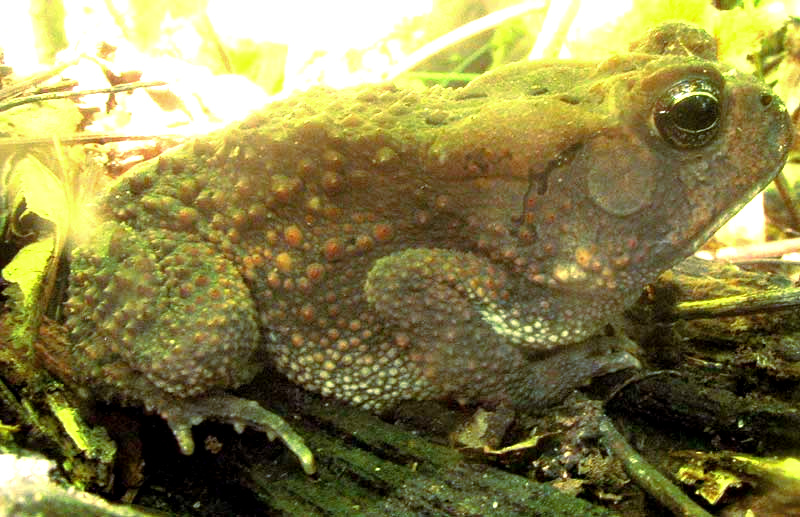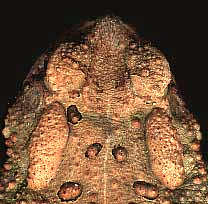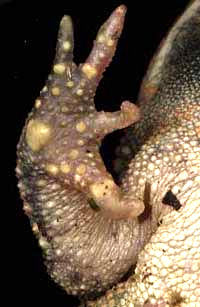

Late one muggy summer night maybe you'll go to turn off the backyard light but before you hit the switch you'll notice below the light a brownish gray, warty-skinned little creature gobbling up whatever moths and bugs have crashed into the light and fallen before his bulbous eyes and wide, tight-lipped mouth. It'll be a toad, maybe the same species as the American Toad, Bufo americanus, shown above.

Besides warty skin, another feature common on toads can be seen in the picture at the left, showing a toad's head from above. Notice the four very large, bulging bumps. The top two are the toad's bulging eyes. The bottom two are poison-secreting glands called parotoid glands. If your cat ever attacks a toad, it probably won't do so again, for poison from these glands makes the toad-chewing experience a bitter one. The white, viscous poison inflames the mouth and throat, causes nausea, irregular heartbeat and, rarely, even death.

Many frogs have webbed toes and treefrog feet bear toes tipped with adhesive pads, but toad feet, more adapted for dry land, lack both webbing and pads. At the right you see what a toad's front foot looks like: Lots of warts but no webbing.  However, on the foot's "palm," there's an especially large, hard-looking wart, a kind of tubercle. At the left, that picture of a toad's back foot also shows a conspicuous tubercle. These turbercles help the toad to dig in the ground.
However, on the foot's "palm," there's an especially large, hard-looking wart, a kind of tubercle. At the left, that picture of a toad's back foot also shows a conspicuous tubercle. These turbercles help the toad to dig in the ground.
One final thing about toads: You don't get warts by handling them!
There's a wonderful eight-minute long film on the migration of the Western Toad's tadpoles on Youtube..
You might enjoy reading Naturalist Jim's field notes on frogs and toads.